- Narcissus: Growing in the Garden, Types and Varieties Your Garden Guide
- Growing Narcissus
- Types and Varieties of Narcissus
- Your Garden Guide
- Narcissus in the Garden
- Types and Varieties
- Planting
- Care
- Propagation
- Common Problems
- Conclusion
- Why Narcissus is a Must-Have in Your Garden
- 1. Beautiful and Versatile Blooms
- 2. Low Maintenance
- 3. Naturalizes and Multiplies
- 4. Early Spring Blooms
- 5. Deer and Rodent Resistant
- 6. Long-Lasting Cut Flowers
- Conclusion
- Tips for Growing Narcissus
- 1. Choose the right location
- 2. Plant at the right time
- 3. Water properly
- 4. Fertilize appropriately
- 5. Deadhead spent flowers
- 6. Protect from pests and diseases
- 7. Allow foliage to die back naturally
- 8. Divide and replant every few years
- 9. Enjoy the beauty of narcissus
- Choosing the Right Type of Narcissus
- Climate and Hardiness Zones
- Flower Form
- Bloom Time
- Fragrance
- Height and Size
- Popular Varieties of Narcissus
- 1. King Alfred
- 2. Tête-à-Tête
- 3. Ice Follies
- 4. Pink Charm
- 5. Jetfire
- Creating a Stunning Narcissus Display
- Choose a Variety
- Plan the Layout
- Prepare the Soil
- Plant the Bulbs
- Provide Proper Care
- Enjoy the Blooms
- Planting and Caring for Narcissus Bulbs
- Common Problems and Solutions for Narcissus
- Pest Problems
- Disease Problems
- Cultural Problems
- Environmental Problems
- Questions and Answers:
- Why should I grow narcissus in my garden?
- What are some popular types of narcissus?
- When is the best time to plant narcissus bulbs?
- How deep should I plant narcissus bulbs?
- Do narcissus flowers need full sun?
- Can narcissus be grown in containers?
- Videos: Daffodils: 7 Weatherproof Varieties in my Garden
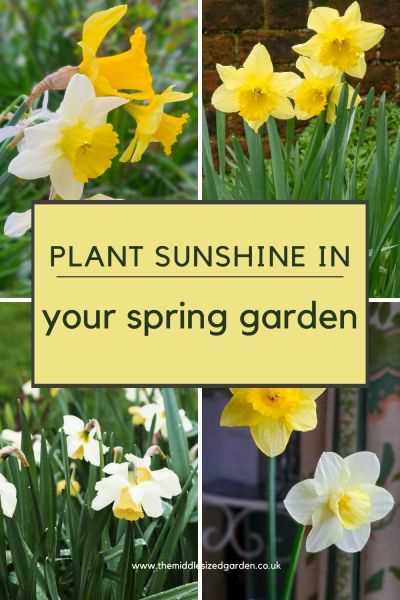
Welcome to our comprehensive guide on narcissus, the beautiful and diverse flower that adorns gardens all around the world. Whether you’re an experienced gardener or just starting out, this article will provide you with all the information you need to successfully grow narcissus in your own garden.
Narcissus, also known as daffodils or jonquils, are a popular choice for gardeners due to their vibrant colors and delicate fragrance. These spring-blooming flowers are native to Europe, North Africa, and parts of Asia, and have been cultivated for centuries. With over 50 species and countless hybrids, there is a narcissus variety to suit every garden style and climate.
One of the key factors to consider when growing narcissus is their preferred growing conditions. These flowers thrive in full sun or partial shade and need well-drained soil. They are remarkably resilient and can tolerate a range of soil types, although they prefer slightly acidic to neutral pH levels. Narcissus bulbs should be planted in the fall, allowing them to establish their roots before the frost sets in.
Tip: Before planting your narcissus bulbs, soak them in water for a few hours. This will help to prevent them from drying out and promote healthy growth.
There are several types and varieties of narcissus to choose from, each with its own unique characteristics. The most common type is the trumpet narcissus, which features a large, trumpet-shaped center surrounded by six petals. Other popular types include the jonquils, which have smaller flowers and a sweet fragrance, and the poeticus narcissus, which has pure white petals and a small, red rim at the center.
Narcissus bulbs can be planted in flower beds, borders, or containers, and make stunning displays when combined with other spring-blooming flowers such as tulips and hyacinths. They also make excellent cut flowers and can be enjoyed indoors in a vase. With proper care and attention, narcissus will continue to multiply and bring joy to your garden for many years to come.
Narcissus: Growing in the Garden, Types and Varieties Your Garden Guide
Narcissus, also known as daffodils or jonquils, are popular spring-flowering bulbs that add beauty and cheer to any garden. This Your Garden Guide will provide you with all the information you need to successfully grow narcissus in your garden, including the different types and varieties available.
Growing Narcissus
Narcissus bulbs are typically planted in the fall, before the ground freezes. They prefer well-drained soil and a sunny or partially shaded location. When planting, make sure to place the bulbs with the pointed side facing up and the roots facing downwards. The planting depth should be about three times the height of the bulb. Water the bulbs after planting, and then provide them with regular watering throughout the growing season.
Narcissus bulbs do not need to be dug up each year and can be left in the ground to naturalize. However, if you wish to divide the bulbs or move them to a different location, it is best to do so after the foliage has died back and turned yellow.
Types and Varieties of Narcissus
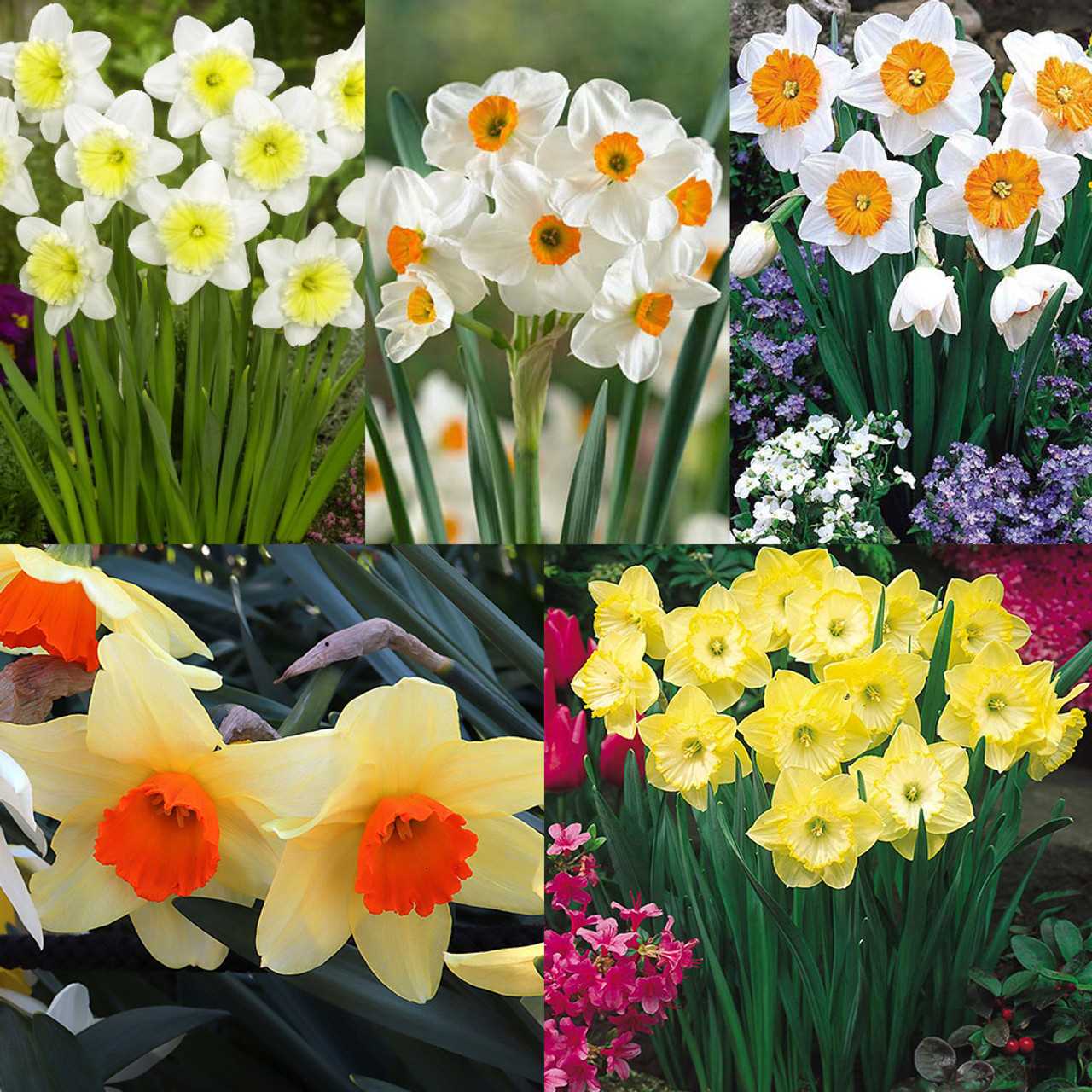
Narcissus come in a wide variety of types and cultivars, each with its own unique characteristics. Some popular types include:
- Trumpet Daffodils: These daffodils have a large, trumpet-shaped center surrounded by six petals. They are available in a range of colors, from classic yellow to white, pink, and orange.
- Large-Cupped Daffodils: Similar to trumpet daffodils, but with a larger cup in the center. They also come in various colors and bloom shapes.
- Small-Cupped Daffodils: These daffodils have a smaller cup in the center, giving them a delicate appearance. They come in a variety of colors and combinations.
- Double Daffodils: These daffodils have multiple layers of petals, giving them a fuller, more ruffled appearance. They are available in various colors, including white, yellow, and pink.
- Jonquils: Jonquils are a type of narcissus with multiple small, fragrant flowers per stem. They are typically yellow and have a strong scent.
It’s always a good idea to mix different types and varieties of narcissus in your garden to create a stunning display of colors and shapes. Planting them in clusters or drifts will give a more natural and eye-catching effect.
Your Garden Guide
Whether you are a seasoned gardener or just starting out, this Your Garden Guide is here to help you successfully grow narcissus in your garden. With their beautiful blooms and easy-care nature, narcissus are a wonderful addition to any garden. Happy gardening!
Narcissus in the Garden
Narcissus, commonly known as daffodils, are one of the most beloved and iconic spring flowers. With their vibrant yellow trumpet-shaped blooms, they bring joy and beauty to any garden. Here is everything you need to know about growing narcissus in your garden:
Types and Varieties
There are many different types and varieties of narcissus to choose from. Some popular ones include:
- Trumpet narcissus: These have large, trumpet-shaped cups surrounded by six petals.
- Small-cupped narcissus: These have smaller cups that are less than one-third the length of the petals.
- Double narcissus: These have double or multiple layers of petals, giving them a ruffled appearance.
- Jonquilla narcissus: These have multiple flowers per stem and a strong, sweet fragrance.
Planting
Narcissus bulbs should be planted in the fall, preferably in September or October. They prefer well-drained soil and full sunlight, although they can tolerate some shade. Plant the bulbs 3-6 inches deep and space them 4-6 inches apart. Make sure to water the bulbs well after planting.
Care
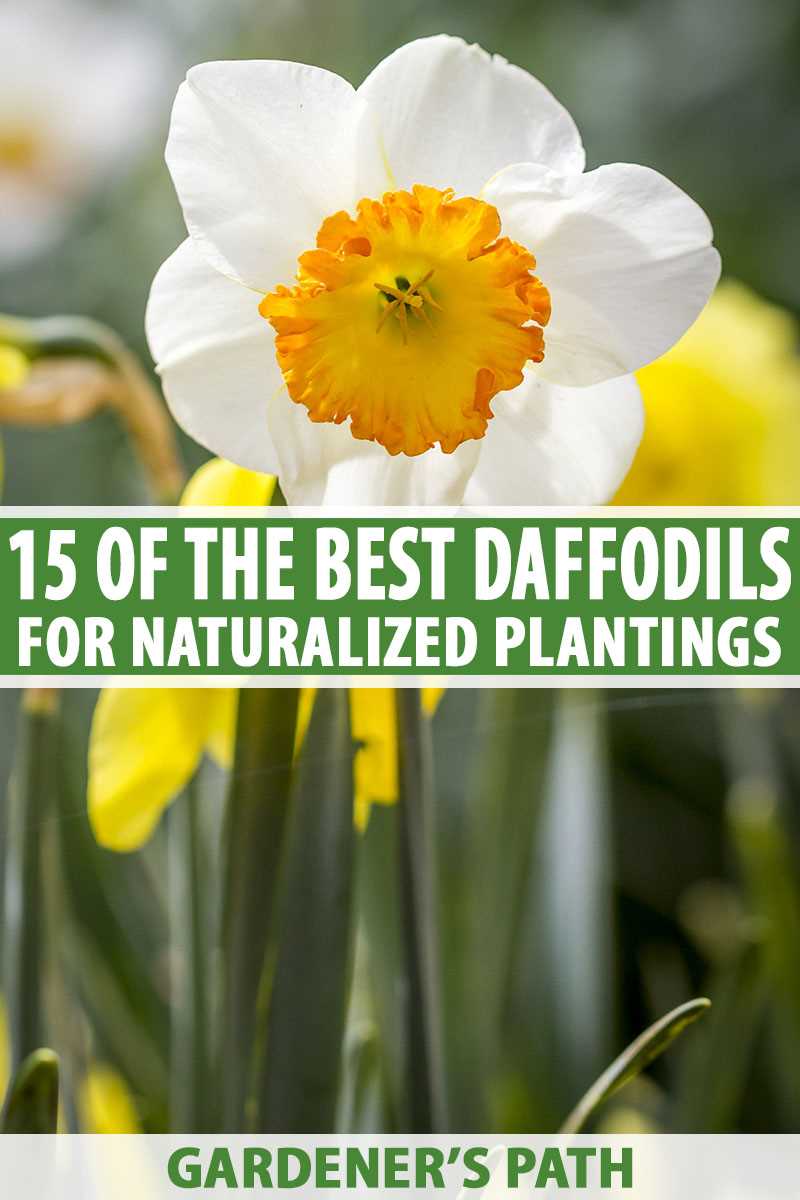
Narcissus are generally low-maintenance and easy to care for. Here are some tips to keep them healthy and blooming:
- Water regularly, especially during dry spells, but avoid overwatering as it can cause bulb rot.
- Apply a balanced fertilizer in early spring to promote healthy growth.
- Deadhead the flowers once they fade to encourage the bulb to store energy for next year’s blooms.
- After the foliage turns yellow and dies back, you can cut it down to ground level.
Propagation
Narcissus can be propagated by division or from bulbs. After a few years, the clumps can become overcrowded and produce fewer flowers. To divide them, dig up the clump in late summer or early fall and carefully separate the bulbs. Replant them immediately in a new location.
Common Problems
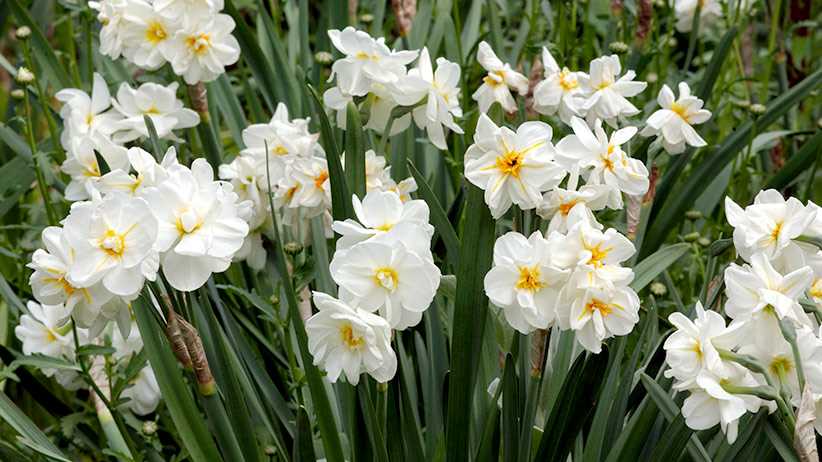
While narcissus are relatively pest and disease-free, they can still face a few common issues:
- Narcissus bulb fly: This pest can damage the bulbs, resulting in stunted or deformed plants. Use insecticides if necessary.
- Fusarium basal rot: This fungal disease causes the bulbs to rot. Planting the bulbs in well-drained soil and avoiding excessive watering can help prevent this.
- Yellowing leaves: This can be caused by various factors, such as overwatering, poor drainage, or nutrient deficiencies. Adjust watering and fertilization accordingly.
Conclusion
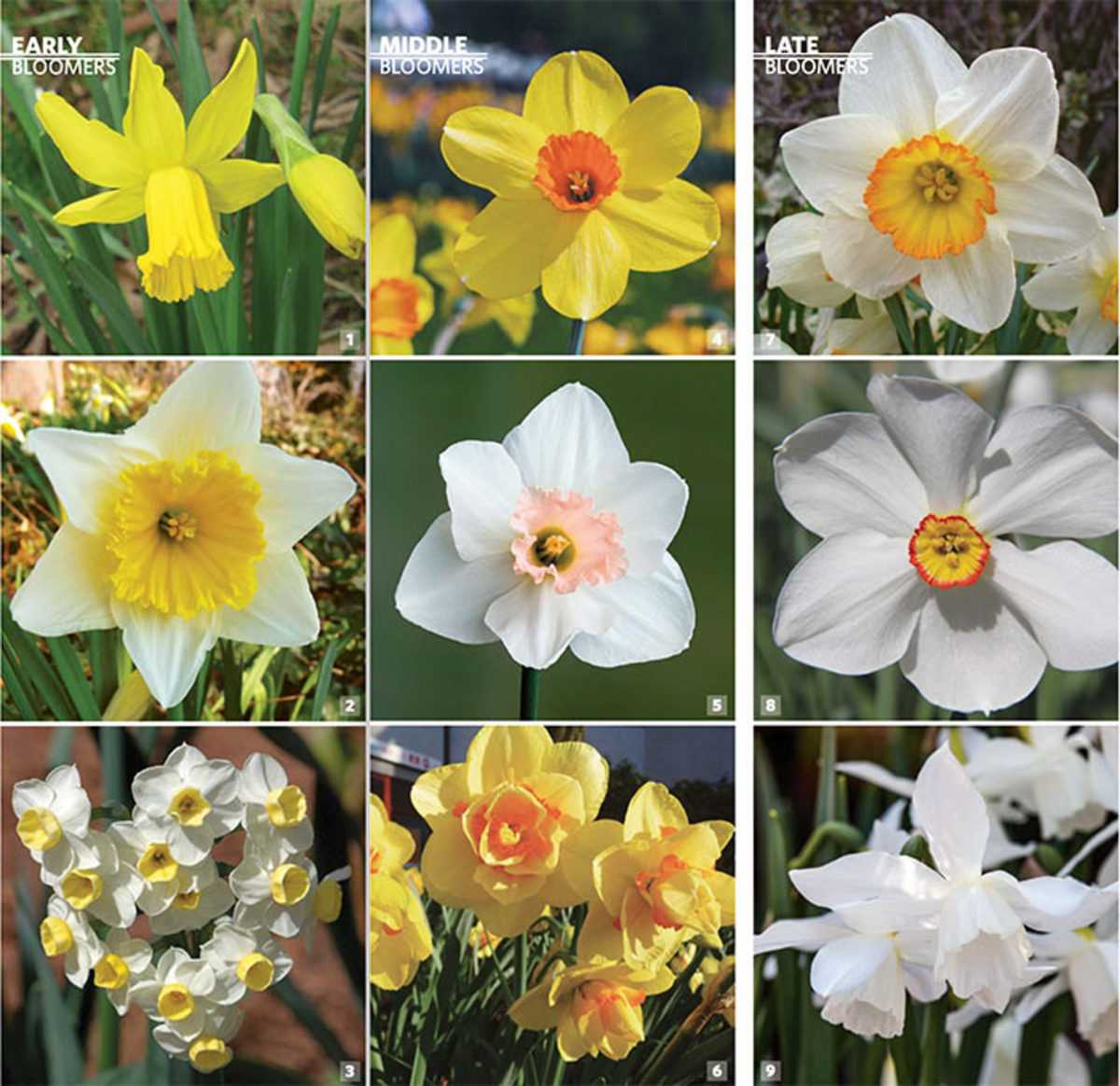
Narcissus are beautiful and easy-to-grow flowers that can enhance any garden with their bright colors and delightful fragrance. With a wide variety of types and colors to choose from, you can create a stunning display each spring. So, why not add some narcissus bulbs to your garden and enjoy their beauty for years to come?
Why Narcissus is a Must-Have in Your Garden
Narcissus, commonly known as daffodils or jonquils, is a must-have flower in any garden. Its vibrant and cheerful blooms, along with its easy cultivation and maintenance, make it a popular choice for both experienced and novice gardeners. Here are a few reasons why you should consider adding narcissus to your garden:
1. Beautiful and Versatile Blooms
Narcissus plants produce stunning blooms in a wide range of colors, including yellow, white, orange, and pink. The flowers have a unique shape with six petals and a trumpet or cup-shaped center. They add a pop of color and elegance to any garden bed, border, or flower arrangement. Narcissus flowers also have a pleasant fragrance that adds to their overall appeal.
2. Low Maintenance
If you’re a busy gardener or prefer low-maintenance plants, narcissus is perfect for you. These flowers are known for their hardiness and ability to thrive in various conditions. They require minimal care once established and can tolerate both full sun and partial shade. Narcissus bulbs can even thrive in areas with colder climates and can be left in the ground year-round.
3. Naturalizes and Multiplies
When planted in the right conditions, narcissus bulbs will naturalize and multiply over time. This means that a small planting can eventually turn into a spectacular display. The bulbs will produce offsets or daughter bulbs, which can be left undisturbed or divided to create even more plants. This naturalization process allows narcissus to become a long-lasting feature in your garden.
4. Early Spring Blooms
One of the greatest advantages of growing narcissus is their early spring blooms. These flowers emerge in early to mid-spring, bringing much-needed color and joy after the long winter months. Their cheerful presence signals the arrival of warmer weather and rejuvenates the garden after the dormant season.
5. Deer and Rodent Resistant
If you have issues with deer, rabbits, or rodents damaging your garden, narcissus can offer a solution. These plants contain toxic alkaloids, making them unpalatable to many animals. Deer and other pests usually avoid nibbling on narcissus, allowing the flowers to flourish undisturbed.
6. Long-Lasting Cut Flowers
Narcissus flowers make excellent cut flowers and can brighten up your indoor spaces. When cutting narcissus, it’s essential to remove the white sap from the stems, as it can cause other flowers in the arrangement to wilt prematurely. By following proper care techniques, you can enjoy the beauty and fragrance of narcissus indoors for several days.
Conclusion
Narcissus is a must-have in any garden due to its beautiful blooms, low maintenance requirements, ability to naturalize, early spring flowering, pest resistance, and suitability as cut flowers. Whether you’re a seasoned gardener or a novice, adding narcissus to your garden will bring joy and color for years to come.
Tips for Growing Narcissus
1. Choose the right location
Narcissus plants thrive in areas with full sun to partial shade. It is important to choose a location that receives at least six hours of sunlight per day. Additionally, make sure the soil is well-draining and rich in organic matter.
2. Plant at the right time
Narcissus bulbs should be planted in the fall, before the first frost. This will give the bulbs enough time to establish roots before the winter. Plant them at a depth of three times the bulb’s height, with the pointed side facing up.
3. Water properly
During the growing season, make sure to water the narcissus plants regularly. The soil should be evenly moist, but not waterlogged. Avoid over-watering, as it can cause the bulbs to rot.
4. Fertilize appropriately
Before planting the bulbs, add some compost or well-rotted manure to the soil to provide nutrients. During the growing season, you can apply a balanced, slow-release fertilizer to promote healthy growth and flowering.
5. Deadhead spent flowers
After the narcissus flowers fade, remove them by cutting the stalks back to the base. This will prevent the plant from using energy to produce seeds and instead focus on storing energy in the bulb for next year’s growth.
6. Protect from pests and diseases
Narcissus plants are generally resistant to pests and diseases. However, they can sometimes be affected by bulb rot, aphids, or narcissus bulb fly. Keep an eye out for any signs of damage and take appropriate measures to control these issues.
7. Allow foliage to die back naturally
After the flowers have finished blooming, allow the foliage to die back naturally. This will help the bulbs replenish their energy reserves for the next blooming season. Avoid cutting or removing the foliage until it turns yellow and withers.
8. Divide and replant every few years
Over time, narcissus bulbs can become overcrowded and produce fewer flowers. To maintain their vigor, divide the bulbs every three to five years. Dig up the clumps, separate the bulbs, and replant them at the appropriate depth.
9. Enjoy the beauty of narcissus
Narcissus plants are known for their stunning blooms and delightful fragrance. Take the time to appreciate the beauty they bring to your garden. Cut some flowers to enjoy indoors or simply sit back and enjoy the show in your garden.
Choosing the Right Type of Narcissus
When it comes to choosing the right type of narcissus for your garden, there are a few factors to consider. With so many varieties available, it can be overwhelming to make a decision. Here are some key points to keep in mind:
Climate and Hardiness Zones
One of the first things to consider is your climate and the hardiness zone in which you live. Some narcissus varieties are better suited to colder climates, while others thrive in warmer regions. Make sure to choose a type of narcissus that is appropriate for your specific climate to ensure successful growth and blooming.
Flower Form
Narcissus flowers come in various forms, including trumpets, daffodils, and poeticus. Each form has its unique charm and characteristics. For example, trumpets have a large, trumpet-shaped center surrounded by petals, while daffodils have a central cup or corona surrounded by petals. Poeticus narcissus features a smaller cup and distinctive white petals with a red or yellow rim. Consider which flower form appeals to you the most for a visually appealing garden display.
Bloom Time
Another factor to consider is the bloom time of the narcissus variety you choose. Some narcissus bloom early in the spring, while others bloom later in the season. By selecting varieties that bloom at different times, you can enjoy a longer flowering season in your garden. This will provide continuous color and beauty throughout the spring.
Fragrance
Many narcissus varieties have a delightful fragrance, adding an extra sensory element to your garden. If you enjoy scented flowers, consider choosing a narcissus variety known for its pleasant scent. Take note that some varieties have a stronger fragrance than others, so choose accordingly based on your personal preference.
Height and Size
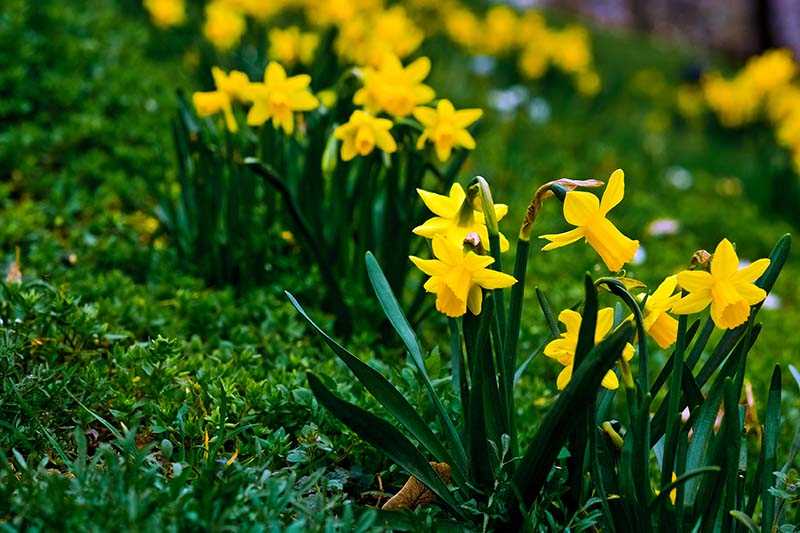
The height and size of narcissus plants can vary significantly between varieties. Some are shorter and more compact, making them suitable for borders and containers, while others are taller and better suited as focal points in the garden. Consider the size and scale of your garden space when choosing a type of narcissus so that it fits in harmoniously with the rest of your plants.
By considering these factors, you can choose the right type of narcissus for your garden. Whether you prefer a specific flower form, a certain bloom time, or a fragrant variety, there is a narcissus out there that will suit your preferences and make your garden bloom with beauty.
Popular Varieties of Narcissus
Narcissus, also known as daffodils, are popular spring-flowering bulbs that are cherished for their beautiful blooms and delightful fragrance. There are many different varieties of narcissus to choose from, each with its own unique characteristics. Here are some popular varieties:
1. King Alfred
The King Alfred variety is one of the most well-known and beloved daffodils. It has large, trumpet-shaped golden-yellow flowers that bloom in mid-spring. This variety is a classic choice for gardens and is known for its strong stems and long-lasting blooms.
2. Tête-à-Tête
Tête-à-Tête is a charming dwarf narcissus variety that produces clusters of bright yellow flowers. It is one of the earliest blooming varieties, often appearing in late winter or early spring. Tête-à-Tête is perfect for rock gardens, borders, and containers.
3. Ice Follies
Ice Follies is a beautiful large-cupped variety with white petals and a creamy-yellow center. This variety is prized for its elegant and showy blooms, as well as its strong fragrance. Ice Follies blooms in mid to late spring and is a great choice for cut flower arrangements.
4. Pink Charm
Pink Charm is a unique variety of narcissus that stands out with its delicate, soft pink petals and bright yellow cups. This variety blooms in mid-spring and adds a beautiful pop of color to any garden or floral arrangement.
5. Jetfire
Jetfire is a striking miniature narcissus variety with bright yellow petals and a fiery orange-red cup. It blooms in early to mid-spring and is known for its long-lasting flowers and sturdy stems. Jetfire is perfect for naturalizing in meadows or planting in masses.
These are just a few examples of the wide variety of narcissus available. When choosing varieties for your garden, consider factors such as bloom time, height, color, and fragrance to create a diverse and stunning display.
Creating a Stunning Narcissus Display
Choose a Variety
To create a stunning narcissus display, start by choosing the right variety of narcissus. There are many different types and varieties available, each with its own unique characteristics and blooming times. Consider factors such as the size and color of the flowers, as well as the length of the blooming period, to select the best variety for your display.
Plan the Layout
Next, plan the layout of your narcissus display. Consider the available space in your garden and determine how many bulbs you will need. Decide whether you want to plant the narcissus in groups or create a scattered effect. Also, consider the height of the narcissus variety you have chosen and plan accordingly to create a visually appealing display.
Prepare the Soil
Before planting the narcissus bulbs, it is important to prepare the soil properly. Make sure the soil is well-draining and slightly acidic. Remove any weeds or debris and loosen the soil with a garden fork or tiller. Add organic matter such as compost or peat moss to improve the soil’s fertility and drainage.
Plant the Bulbs
Once the soil is prepared, it’s time to plant the narcissus bulbs. Dig holes that are about three times the depth of the bulbs and place them in the holes with the pointed ends facing up. Space the bulbs according to the recommended distance for the variety you have chosen. Cover the bulbs with soil and gently pat it down to remove any air pockets.
Provide Proper Care
After planting the narcissus bulbs, provide them with proper care to ensure a stunning display. Water the bulbs thoroughly after planting and continue to water them regularly, especially during dry periods. Apply a layer of mulch to help conserve moisture and suppress weed growth. Fertilize the narcissus plants in early spring and again after they have finished blooming.
Enjoy the Blooms
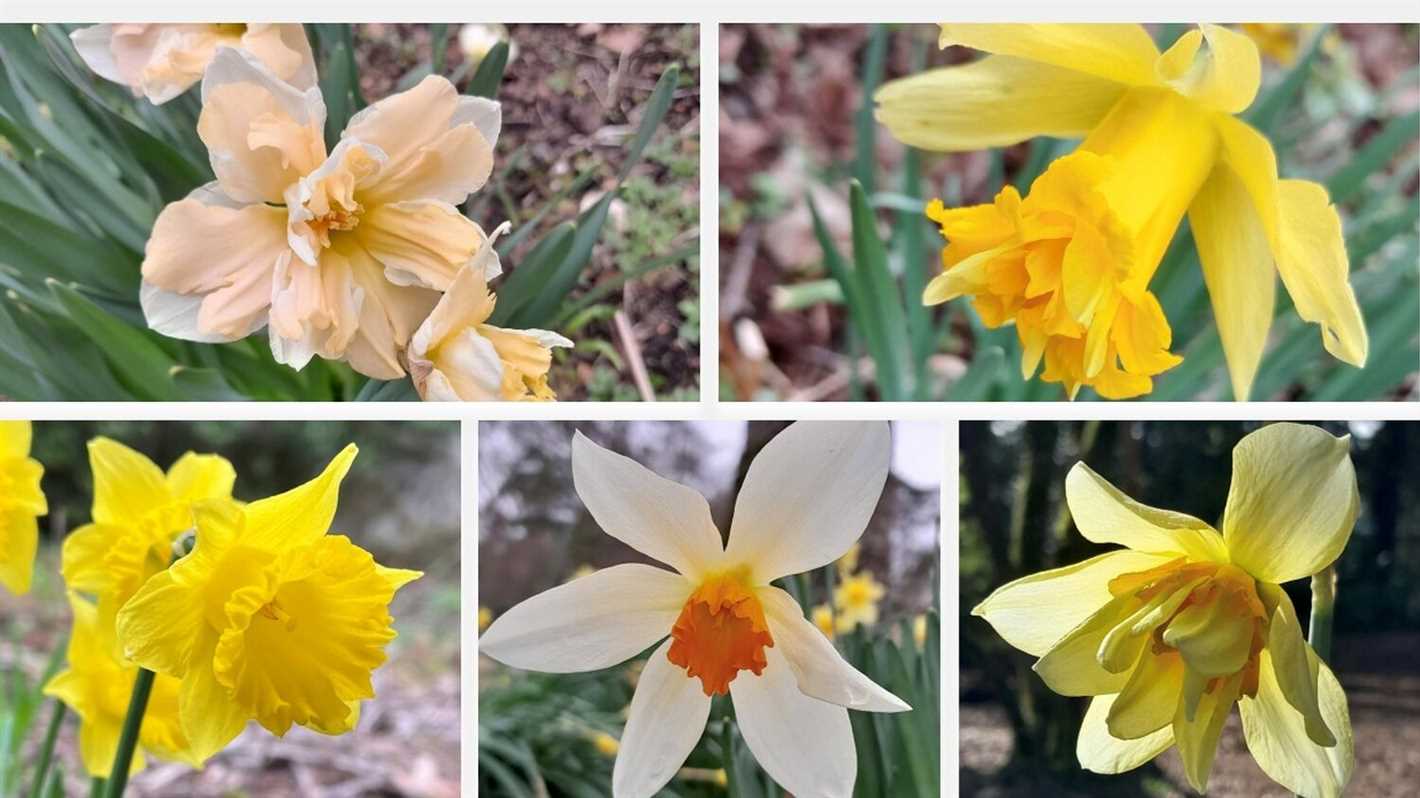
Finally, sit back and enjoy the stunning display of narcissus blooms in your garden. As the flowers emerge and bloom, their vibrant colors and delicate fragrance will create a beautiful focal point. Take the time to admire and appreciate the hard work and planning that went into creating such a breathtaking display.
Planting and Caring for Narcissus Bulbs
- Choose a Location: Narcissus bulbs thrive in well-drained soil and prefer full sun or partial shade. Select a location in your garden that meets these requirements.
- Prepare the Soil: Before planting the narcissus bulbs, prepare the soil by removing any weeds or debris. Loosen the soil to a depth of 6-8 inches and mix in some organic matter, such as compost or peat moss, to improve drainage and fertility.
- Planting the Bulbs: Dig a hole that is 3-4 times deeper than the height of the bulb. Place the bulb in the hole with the pointed end facing up. Space the bulbs 4-6 inches apart to allow for proper growth and development.
- Watering: After planting the bulbs, water the area thoroughly to settle the soil and provide moisture for the bulb. Throughout the growing season, keep the soil consistently moist but not waterlogged. Water deeply once a week if rainfall is scarce.
- Fertilizing: Narcissus bulbs do not require much fertilization. You can mix a slow-release bulb fertilizer into the soil during planting or apply a balanced granular fertilizer in early spring. Follow the instructions on the fertilizer package for application rates.
- Mulching: Apply a layer of organic mulch, such as bark chips or straw, around the planted area. Mulch helps retain moisture, suppress weed growth, and regulate soil temperature.
- Deadheading: After the narcissus blooms have faded, remove the spent flowers by cutting the stem just above the foliage. Deadheading prevents the plant from putting energy into seed production and encourages future bulb growth.
- Overwintering: Narcissus bulbs are hardy and can survive winter temperatures. However, if you live in a region with extremely cold winters, consider adding a layer of mulch or leaves over the planted area to provide extra insulation.
- Dividing and Transplanting: Over time, narcissus bulbs can become overcrowded and produce fewer flowers. To maintain their vitality, divide the bulbs every 3-5 years in late summer or early fall. Dig up the clumps and separate the bulbs, discarding any damaged or diseased ones. Replant the bulbs in a new location or amend the existing soil with organic matter before replanting.
- Pests and Diseases: Narcissus bulbs are generally resistant to pests and diseases. However, they can be susceptible to bulb rot if planted in waterlogged soil. To prevent this, ensure proper drainage and avoid overwatering. If you notice any signs of disease, such as discolored or mushy bulbs, remove and dispose of them to prevent spreading.
Common Problems and Solutions for Narcissus
Pest Problems
- Aphids: Aphids are small insects that suck the sap from the leaves and stems of narcissus plants. To control aphids, you can spray the plants with an insecticidal soap or use natural predators such as ladybugs.
- Thrips: Thrips are tiny insects that feed on the leaves and flowers of narcissus plants, causing them to become distorted. To control thrips, you can spray the plants with an insecticidal soap or use biological controls such as predatory mites or lacewings.
- Narcissus bulb fly: Narcissus bulb fly larvae feed on the bulbs, causing them to rot. To prevent infestations, you can inspect bulbs before planting and remove any that show signs of damage. You can also use floating row covers to protect the plants from adult flies.
Disease Problems
- Fusarium basal rot: Fusarium basal rot is a fungal disease that affects the base of the narcissus plant, causing it to rot. To prevent this disease, you can plant bulbs in well-draining soil and avoid overwatering. If you notice any infected plants, you should remove and destroy them to prevent spread.
- Narcissus yellow stripe: Narcissus yellow stripe is a viral disease that causes yellow streaks on the leaves of the plant. There is no cure for this disease, so infected plants should be removed and destroyed to prevent spread.
- Botrytis blight: Botrytis blight is a fungal disease that causes brown spots on the leaves and flowers of narcissus plants. To prevent this disease, you can plant bulbs in well-ventilated areas and avoid overwatering. Infected plants should be removed and destroyed.
Cultural Problems
- Overwatering: Narcissus plants prefer well-draining soil, so overwatering can lead to root rot. To prevent overwatering, you should allow the soil to dry out between waterings and avoid planting bulbs in areas with poor drainage.
- Underwatering: While narcissus plants don’t require excessive watering, they still need regular moisture. Underwatering can result in stunted growth and poor blooming. You should water the plants regularly, especially during dry periods.
- Poor soil quality: Narcissus plants prefer rich, well-draining soil. Poor soil quality can lead to nutrient deficiencies and poor growth. You should amend the soil with organic matter, such as compost, before planting.
Environmental Problems
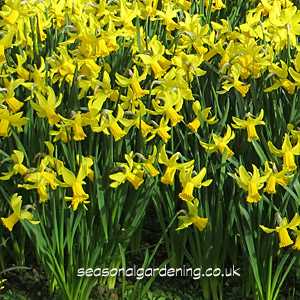
- Frost damage: Narcissus plants are susceptible to frost damage. You can protect the plants from frost by covering them with a layer of mulch or using frost blankets. If the plants do suffer frost damage, you should remove the damaged foliage and wait for new growth to emerge.
- Excessive heat: High temperatures can also be damaging to narcissus plants. During hot summer months, you should provide shade for the plants or mulch around them to keep the soil cool. Adequate watering is also important to help the plants cope with heat stress.
Questions and Answers:
Why should I grow narcissus in my garden?
Growing narcissus in your garden can add a beautiful display of color and fragrance. These flowers are easy to grow and require very little maintenance. They are also deer resistant, making them a great choice for gardens in areas with high deer populations.
What are some popular types of narcissus?
Some popular types of narcissus include the trumpet daffodils, such as the ‘Dutch Master’ and ‘Ice Follies’. Other popular varieties include the large-cup daffodils, like the ‘Fortissimo’ and ‘Golden Harvest’, and the small-cup daffodils, such as the ‘Tête-à-Tête’ and ‘Jetfire’.
When is the best time to plant narcissus bulbs?
The best time to plant narcissus bulbs is in the fall, before the ground freezes. This allows the roots to establish before winter and ensures that the bulbs will bloom in the spring.
How deep should I plant narcissus bulbs?
You should plant narcissus bulbs at a depth that is two to three times the height of the bulb. For example, if the bulb is one inch tall, plant it at a depth of two to three inches.
Do narcissus flowers need full sun?
Narcissus flowers prefer full sun to partial shade. They will still bloom in partial shade, but the flowers may not be as vibrant and the plant may not multiply as quickly.
Can narcissus be grown in containers?
Yes, narcissus can be grown in containers. Choose a container that is at least 10 inches deep and has drainage holes. Fill the container with well-draining potting soil and plant the bulbs at the appropriate depth. Place the container in a sunny spot and water as needed.







